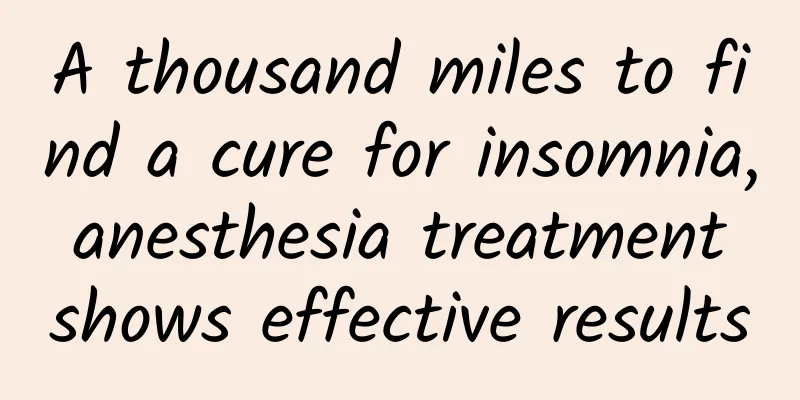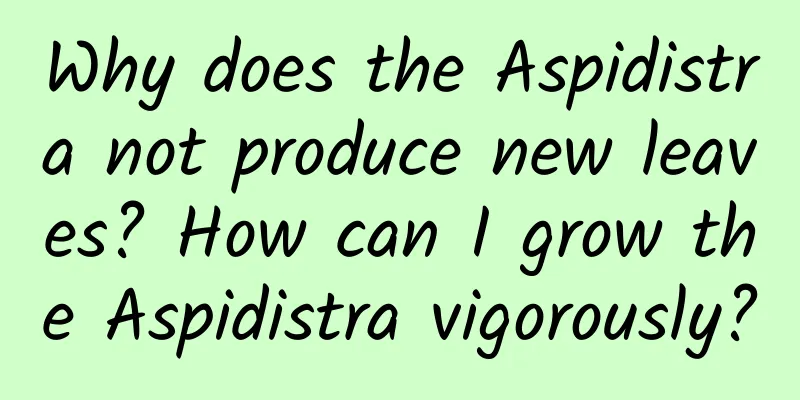A thousand miles to find a cure for insomnia, anesthesia treatment shows effective results

|
Insomnia is one of the most common and painful diseases in the world. So far, few countries have made any progress in research, and anxiety and depression combined with insomnia are recognized as a medical problem. However, the leaders of the anesthesia industry are doing their best to actively explore the feasibility of anesthesia technology to treat insomnia. Mr. Xiong, 56 years old, has suffered from insomnia for more than 30 years. In the past 10 years, he often had difficulty falling asleep all night, accompanied by palpitations, fatigue, memory loss, mood disorders, irritability, decreased energy, decreased work initiative, and great concern about sleep. He went to many hospitals for treatment and was given drugs such as "duloxetine hydrochloride, fluvoxamine maleate, quetiapine fumarate, mirtazapine, clonazepam" alternately. He took "clonazepam 2mg, quetiapine fumarate 50mg, fluvoxamine maleate 200mg" before admission, but still had a subjective lack of sleep and no deep sleep. When Mr. Xiong was at a loss, he heard that the Sleep and Psychosomatic Medicine team of the Central Hospital Affiliated to Chongqing University of Technology had rich experience in this treatment field. On April 27, 2024, he went to Chongqing to seek further professional treatment. His goal was to "reduce medication and get a good night's sleep." Huang Li, director of the department, led the team to inquire about the patient's medical history in detail and conduct a comprehensive evaluation, and formulated a personalized treatment plan: anesthesia treatment + cognitive behavioral therapy for insomnia, and adjusted the original oral medications at the same time. The results of polysomnography on the third day showed: sleep efficiency: 65.1%, sleep latency 90 minutes, total sleep time 340.5 minutes; sleep stage: N1 stage proportion 19.4% (increased), N2 stage proportion 40.1% (decreased), N3 stage proportion 0% (missing), REM stage proportion 5.6% (decreased); respiratory and related events: AHI: 0.53, minimum oxygen saturation 92%, average oxygen saturation 96%. On the fifth day, "clonazepam" was discontinued smoothly and smoothly, "fluvoxamine" was discontinued on the eighth day, and oral medications were adjusted to "olanzapine 2.5mg, right left piclon 3mg" on the ninth day. After that, the total sleep time was about 8 hours per night, the subjective sleep quality was good, the mood was stable, and the cognitive function was significantly improved. When he was discharged from the hospital, Mr. Xiong said, "I am alive again and I have found myself again." There is a special EEG spectrum under general anesthesia. As the anesthesia goes from shallow to deep, the low-frequency and high-amplitude wave activity gradually increases, mainly delta and alpha waves. Sleep-wakefulness is an active regulatory behavior of the human body. The characteristics of EEG activity in REM sleep are similar to those in the wakefulness period, showing low-amplitude mixed frequencies and intermittent theta waves; non-rapid eye movement sleep is divided into three stages: N1 stage EEG slows down and low-frequency theta waves appear, N2 stage EEG features the appearance of k-complex waves and spindle waves on the background of theta waves, and N3 stage EEG shows medium or high-amplitude slow delta waves. Non-rapid eye movement sleep and rapid eye movement sleep alternate during a normal adult's sleep throughout the night. Anesthesia-induced sleep balance has both similarities and differences with traditional general anesthesia. When treating insomnia, anesthesiologists use a single sedative-hypnotic drug to achieve a certain depth of sleep. General anesthesia, on the other hand, uses a combination of sedatives, analgesics, and muscle relaxants to enable surgical operations. Anesthetic techniques currently used in the treatment of insomnia: 1. Anesthesia-induced sleep balance surgery Dexmedetomidine has a positive effect on adjusting sleep. It can awaken the sedative and hypnotic mechanisms, prompt the patient to regain consciousness, communicate with the outside world and cooperate with the examination, and ensure that the patient falls asleep again in a short time without external stimulation. This drug is an adrenaline receptor agonist, which plays a role in the locus coeruleus-norepinephrine, regulates the state of wakefulness, regulates other wakefulness pathways, activates the wakefulness and sleep-promoting systems, reduces the level of excessive wakefulness of the body's cerebral cortex, quickly corrects the body's disordered "sleep-wake" pathway, and improves sleep structure. Secondly, using dexmedetomidine as a sleep-inducing drug can reduce sympathetic nerve tone, enhance vagus nerve activity, ensure that the concentration of catecholamines in the body's plasma is reduced, inhibit the wakefulness-promoting mechanism, give full play to the sedative effect, improve sleep quality, and the effect is relatively ideal. 2. Stellate nerve block The increased sympathetic nerve tone leads to a disorder in the secretion rhythm of pineal gland hormone. Stellate nerve block can promote the functional recovery of nerve cells, reduce the sympathetic nerve tone, thereby regulating the secretion of pineal gland hormone and improving sleep. Norepinephrine belongs to the catecholamine class of substances and is a neurotransmitter that is mainly synthesized and secreted by sympathetic postganglionic neurons and adrenergic nerve endings in the brain. Norepinephrine in the blood is a sensitive indicator of sympathetic nerve activity. The norepinephrine content in the plasma of insomnia patients is significantly higher than that of the normal control group. Stellate nerve blockade blocks the sympathetic nerves, reduces the release of norepinephrine from nerve endings, and thus reduces the level of norepinephrine in the plasma, playing a role in treating insomnia. Norepinephrine has a dose-dependent inhibitory effect on the production of plasma nitric oxide in patients with insomnia. The patient's plasma nitric oxide content is reduced, causing cerebral vasoconstriction, neurological dysfunction, and insomnia. Stellate nerve block can block the sympathetic nerves, reduce the level of norepinephrine in plasma, increase the level of nitric oxide, improve the blood flow of the diencephalon and hypothalamus, and restore the central nervous function of sleep. Therefore, stellate nerve block can effectively improve the sleep quality of insomnia patients. Huang Zhihua, Department of Anesthesiology, Guilin Medical College Hospital Wang Jing, Department of Sleep and Psychosomatic Medicine, Central Hospital Affiliated to Chongqing University of Technology Huang Li, Department of Sleep and Psychosomatic Medicine, Central Hospital Affiliated to Chongqing University of Technology |
>>: Cardiovascular disease prevention strategies and challenges
Recommend
Acid reflux in late pregnancy
Every pregnant woman will be particularly careful...
Where is the sensitivity of women?
In the relationship between men and women, one of...
My period has not come yet and my vaginal discharge is bloody
We all know that many women’s leucorrhea will tur...
After a child vomits, his stomach is empty. Is it right to replenish water and food immediately?
At the beginning of the Year of the Snake, there ...
Is withdrawal bleeding a sign of successful contraception?
Withdrawal bleeding refers to a symptom. Vaginal ...
Very shallow watermark in early pregnancy
Human chorionic gonadotropin (commonly known as H...
34 weeks pregnant, no fetal movement for one day
After a period of time, the fetus will move back ...
Why does the vaginal discharge suddenly increase?
The sudden increase in vaginal discharge should b...
Breasts remain tender during lactation
Although women's breasts are softer than othe...
Causes and clinical manifestations of cervical polyps
Nowadays, many friends are troubled by cervical p...
Is it okay to have a medical abortion at 7 weeks and 3 times?
As people's sexual attitudes become more open...
How to replenish kidney deficiency in women? These methods are very useful
Kidney deficiency has a great impact on women'...
How to feed koi at home to make them grow fast? How often do koi usually get fed?
As people's quality of life improves, more an...
Why do I have leucorrhea after having an abortion?
Nowadays, many young men and women may get the wo...
What is the best treatment for breast cysts?
There are more and more gynecological diseases no...









